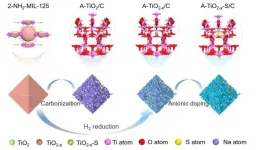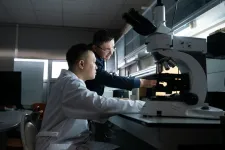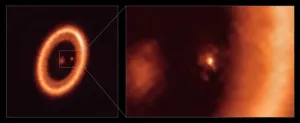Researchers at the University of Sheffield Institute for Sustainable Food modelled data from the Food Foundation, who surveyed people across the UK, and for the first time were able to identify food insecurity at a local authority scale. Local authority percentages show the marked variation in levels of food insecurity between local areas and, whereas national and even regional averages, hide this difference.
According to data from the Food Foundation, in January 2021, 4.2 per cent of adults across the UK reported that during the previous month they had been hungry but unable to eat at least once, but the problem is much worse in some places with nearly one out of every ten adults going hungry.
This new analysis of the national data collected during the pandemic goes further to assess the problem at a local authority level and breaks down experiences of food insecurity into three distinct groups, mapping them for the first time:
Those who are hungry include people who indicated that they were hungry but were unable to eat food because they could not afford it, or were unable to access food in the previous month.
Those who are struggling to access food, include those who may have sought help within the last month with access to food, have cut back on meals and healthy foods to stretch tight budgets, or indicated that they struggled to access food in some way. In some places the rate is as high as 28 per cent of adults.
Those who worry about food insecurity or being able to continue to supply adequate food for their household. These people may be just about managing but could slip into food insecurity as a result of an unexpected crisis. Data, represented on a map of the UK identifies which local authorities are most affected within all four nations of the UK. The map shows it is in England where the areas with the highest and lowest rates of food insecurity are located. At one end of the scale, the majority of local authorities in Yorkshire and the Humber are in the top 20 per cent of local authorities with the greatest percentages of adults going hungry, whereas in the East of England, the majority of local authorities are in the 20 per cent that have the lowest percentages.
Across the Sheffield City Region, both Rotherham and Barnsley are in the 20 per cent of local authorities with the highest percentages of adults who were hungry at least once in January. While Rotherham, Barnsley and Doncaster are all in the 20 per cent of local authorities with the highest percentages of adults who were most likely to have struggled to access food.
The areas worst hit by food insecurity are Wycombe [1] with 14 per cent of people who are estimated to be hungry and nearly 30 percent of people who are struggling to access food. The area also has high estimates for numbers of people who are worried about having enough food (22 per cent). This is followed closely by Hull with 13 per cent of people being hungry and more than one in five adults who struggled to access food. The locality with least hunger, struggle or worry is St. Albans.
Food insecurity is the inability to consistently afford, access and utilise the food needed to maintain good health and wellbeing. The problem has become well known in recent years due to the rise in reporting on food bank usage in the UK; the Food Foundation has been tracking household food insecurity UK-wide showing more people living with the daily effects of poor diets and limited food access.
Typically measures of moderate and severe food insecurity use three indicators: skipping meals for a whole day or more, not having enough food and going hungry, and shrinking or skipping meals with 7.4 per cent of adults reported one or more of these experiences in the one month running up to January 2021.
In this study, the second indicator comprises the Hungry measure. The estimates for the struggling with food access measure include those who skipped or shrank meals, and also includes those who indicated that they sought help when they were food insecure, and those who gave a reason for not having enough food.
The worry measure is not generally included in other estimates of food insecurity; however, this group is likely to be at increased risk of food insecurity. They will struggle to include healthy food in their diets and be bearing the mental strain of trying to make their budgets stretch.
Dr Megan Blake from the University of Sheffield Institute for Sustainable Food, who collaborated on the work, said: "This new map, for the first time, makes visible the patterns of food insecurity across the UK. While no one should have to go hungry, struggle to get or worry about having enough food, in some places it is at proportions that are especially shocking, particularly as we are a wealthy country. If we are going to recover from Covid-19 we must address this problem."
This new analysis of the data shows how not everyone living with food insecurity experiences hunger on the same level, making apparent that an alarmingly large number of people also actively plan to go without food to make ends meet, or worry about doing so. The burden of these forms of food insecurity also immediately threatens people's health and wellbeing.
For some, living on the edge of food insecurity may mean an event such as a car or boiler breakdown or an unexpected illness, could be the tipping point that squeezes their food budget, and they have to plan to eat less, or skip meals altogether.
This in turn can be linked to higher rates of illness and obesity due to people buying cheaper foods, which store longer and are more filling, over healthier choices.
Kris Gibbon-Walsh, from FareShare - the UK's national network of charitable surplus food redistributors, and the Emergencies Partnership, said: "The best way to become food secure is to have the health and money to go to the shops, buy the nutritious food you need for your family and the knowledge to cook it. People should not need to rely on charity to access food, however charities can do a huge amount of good work with food to support their communities, bring people together and stop them becoming food insecure in the first place.
"Having a map of food insecurity in the UK allows FareShare and other food organisations to understand the geographical implications of where we send our food and make decisions, not only about where the food goes, but also how the local foodscape can best support its community out of food insecurity."
Anna Taylor, Executive Director, Food Foundation said: "We've known from tracking food insecurity at a national level during the pandemic that Covid-19 has pushed households across the UK further into hardship and forced a newly vulnerable segment of society to seek help for the first time.
"Local authorities have played a leading role in strengthening charitable food provision for the vulnerable during the crisis and many now have a good understanding of levels of need in their area. But this new study makes clear the variation in food access and vulnerability to food insecurity from one local authority to the next across the UK. It should provide a valuable resource to inform and drive targeted policy action at the local level in response to the data to eradicate food insecurity and deliver on the levelling up agenda."
Dr Megan Blake, added: "We hope this clear breakdown of the data will be a useful resource for local authorities and the government to use to address the challenges facing all people living with food insecurity, and that help can be tailored and targeted to those communities who need it, as the answer is not as simple as opening more food banks."
"Food insecurity is undermining our chances of recovery after Covid-19. We need to urgently address this issue that pervades so many of our communities. No one should have to be hungry."
INFORMATION:



